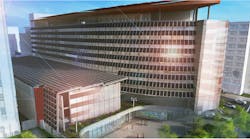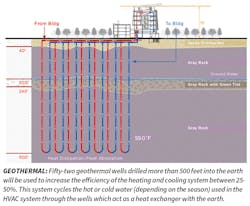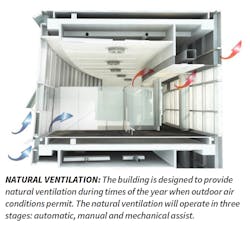News & Notes: At the Heart of a Net Zero Energy Surge
Lost in the chaotic cacophony of our daily news cycles, the global Net Zero Energy movement for commercial buildings quietly appears to have achieved critical mass. And HVACR systems now undeniably are at the center of this surge in sustainable applications of energy-efficient smart controls and systems integration.
In just the last six months, significant milestones have either been achieved or announced that indicate ‘Net Zero’ is here to stay and may soon be mainstream across multiple building classifications, with still more to come. In November, manufacturer and smart cities advocate Johnson Controls (JCI) released the findings of its 2018 Energy Efficiency Indicator (EEI) survey, which polled nearly 2,000 facility and energy management executives from 20 countries.
Specifically, the annual EEI report saw a significant year-over-year increase in net zero energy goals, with 61% of U.S. organizations “extremely or very likely to have one or more facilities that are nearly zero, net zero or positive energy/carbon in the next 10 years.” That finding was up 14% from the previous year, JCI noted.
“Without upgrading our existing buildings to higher efficiency technologies, we have zero hope of getting to zero energy –or at least ultra-low energy performance,” said Cathy Higgins, research director at the nonprofit New Buildings Institute (NBI), Portland OR.
Higgins made those remarks last month in a blog post detailing her ongoing work with the California Energy Commission (CEC), which in 2017-18 studied where further investment was most needed to help buildings get to net zero. “In the areas of standard building technologies, HVAC load reduction ranked the highest, which in turn drives a need for both envelope solutions and efficient HVAC systems,” she added.
Last fall, the largest net zero commercial building in the U.S. opened to much acclaim in Silver Spring MD, following the mandate of owner United Therapeutics (UT), a biotech firm. Called Unisphere, the 135,000-sq-ft structure was designed by architect-engineer EwingCole to be “site net zero”, which means it generates enough renewable energy onsite to offset 100% of the energy it consumes over the course of a year.
To achieve the net zero goal, the facility includes 3,000 photovoltaic panels, geo-exchange wells, a high-performance curtainwall with electrochromic glazing, an earth-coupled heating/cooling system, an automated natural ventilation system, daylight harvesting, and a thermal pool. Other features include green roof terraces that help reduce rainwater run-off, electric car charging stations, and eco-friendly furniture.
“During planning, it became clear that the net zero mission would live and die with the Building Automation System (BAS),” noted Thomas Kaufman, associate director of corporate real estate for owner United Therapeutics. “The BAS integrates seven different systems (power monitoring, lighting control, data analytics, electrochromic glass, geothermal optimization, interactive sustainability visualization, and the fire alarm) and controls and monitors over 11,000 devices.”
During temperate weather, the BAS automatically opens exterior windows to naturally ventilate the building. “During natural ventilation mode, the Unisphere’s HVAC system consumes about as much energy as an average suburban home,” added Kaufman, writing for the Realcomm.com blog.
Such promised results are drawing more owners, both public and private, into this market, and manufacturers worldwide continue to follow. On Jan. 29, Mitsubishi Electric Corp. announced that it will build a new $32-million test facility for its net zero energy buildings at its technology R&D center in Kamakura, Japan. Slated to open in mid-2020, the initiative is part of the firm’s wide-ranging effort to help achieve the United Nations Sustainable Development Goals (SDGs), which now target 2030.
So, much is happening on the net zero front, both in the U.S. and overseas. This is just a snapshot. Stay tuned for much more...









